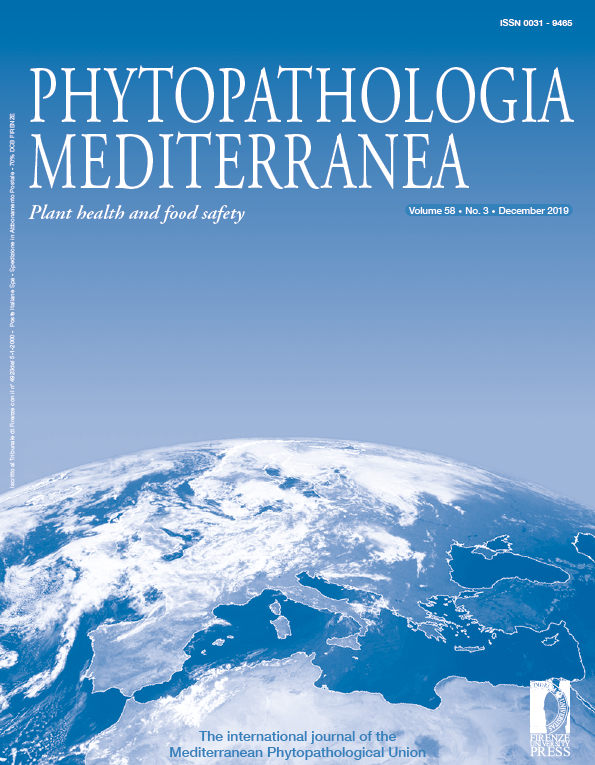Published 2019-12-30
Keywords
- Alternaria leaf spot,
- fungicide resistance,
- QoIs,
- SDHIs,
- molecular characterization
How to Cite
Funding data
-
Horizon 2020
Grant numbers 634179
Abstract
Severe outbreaks of Alternaria leaf spot have occurred in Northern Italy on leafy vegetable and ornamental hosts. This disease is mainly controlled by two classes of respiration inhibitor fungicides, QoIs (including azoxystrobin) and SDHIs (including boscalid). Thirty-six Alternaria strains were isolated from five leafy vegetable crops, and subjected to molecular characterization. Multilocus phylogenetic analyses assigned most of the strains (86%) to A. alternata, while the rest were A. arborescens and other Alternaria spp. In vitro sensitivity assays showed that 3% of the strains were of intermediate resistance, and 11% of reduced sensitivity to azoxystrobin, while 8% of the strains were resistant to boscalid. Sequencing of cytochrome b in an intermediately resistant strain of Alternaria revealed the G143A mutation. This strain was also resistant to boscalid. None of the tested Alternaria strains had amino acid mutations associated with boscalid resistance coded by the SdhB and SdhC genes. This is the first report of azoxystrobin resistance in A. alternata in Italy, as well as the first record of resistance of Alternaria spp. found on leafy vegetables. As boscalid resistance was not associated with any frequently reported mutations, further investigations of the additional resistance mechanisms are necessary. These results demonstrate the need for well-organized chemical control of emerging Alternaria diseases, to prevent the increase of resistance to QoI and SDHI fungicide classes, and the possibility of double fungicide resistance in these pathogens.







